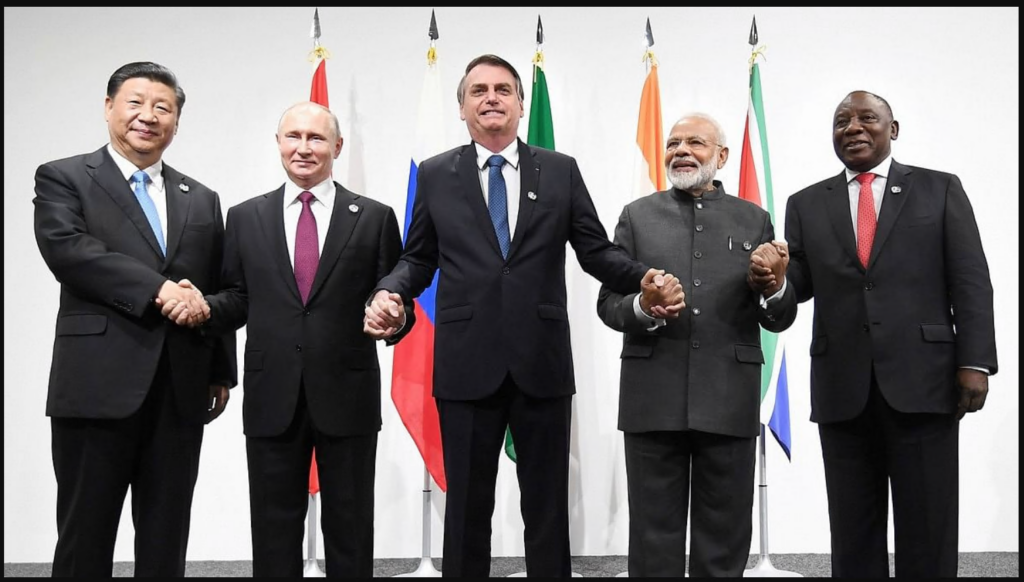By Sundance from The Conservative Treehouse – Original Article Here
Hindsight is not only 20/20, in this case it’s a little alarming.
Last year, we were discussing the massive increases in food and farming costs associated with increased fertilizer prices. By the time we got to late January, the World Bank (WB), United Nations (UN) and the Davos / World Economic Forum (WEF) group were discussing it. At first the perspective was the potential for lower crop yields creating increased global famine.
However, if we apply a little hindsight from the geopolitical world surrounding the current issues in Europe, specifically Ukraine, and then consider the background of what the Biden team were doing, while Russia, Belarus and China were stockpiling, things look a little more concerning than just lower crop yields as an outcome of higher natural gas prices – vis-a-vis nitrogen fertilizer.

As noted by Forbes last month, “Russia and China have imposed export restrictions on fertilizer. Both are, or were, big exporters of plant food. The decline in exports makes getting the vital nutrients harder across the globe. China and Russia account for 29% of world exports for nitrogen-based plant food. The two countries also have significant, albeit, smaller shares of the phosphate and potash markets, respectively, the report states.”
Now, keep in mind how Belarus helped Russia with the current military operation.
In August of 2021 the United States, Canada and the EU hit Belarus with punitive sanctions on the one-year anniversary of what they called a fraudulent election. As noted by Politico at the time, “The sanctions partially ban imports of potash fertilizer, petrol and petrol-based products from Belarus.” […] Targeting Belarus’ potash sector was a strategic move insofar as the country is the second largest exporter of the fertilizer behind Canada, covering 21 percent of the world’s potash exports in 2019.
In September of 2021, at the same time as China was investing heavily in the purchase of U.S. farmland, Beijing simultaneously announced a ban of export for phosphates until June of 2022. With China banning export of the source material, the global fertilizer market now needed to look elsewhere for future purchases.

We now know that Russia and China were talking geopolitical strategy with each other long before the Russian army crossed the border into Ukraine. However, in the weeks before they launched their military operation, in late January, Russia also triggered a full ban on the export of ammonium nitrate.
Against the backdrop of Ukraine’s importance as a “breadbasket” for the EU, similar in strategic importance as California is for the U.S., these background moves by Russia and China now appear coordinated. China moved first to block the key ingredient for fertilizer, then Russia moved to do the same about four weeks before they launched militarily.
Both the Chinese and Russian moves could be viewed as proactive food security positions against any reactive sanction activity that would target food production. Individually each of these moves may seem small, but take them collectively, and there’s an alarming big picture.
If you remove the raw material fertilizer products from China, Belarus, Russia and now Ukraine from the global marketplace, that’s over two-thirds of the total global supply gone. As bumbling Joe would say, “That’s a big effen’ deal,” big enough to create havoc when it comes to the 2022 farm growing season in just about every country.
Assuming strategic government intervention, the U.S. and Canada can withstand it (albeit with massive price increases for farmers) but many other countries around the world will be in big trouble with a much lower harvest yield. One nation that would be particularly vulnerable is Brazil – the world’s second largest exporter of soybeans (U.S. #1, Brazil #2).
Did China, Russia and their strategic partners plan this out?
Apply hindsight and the answer seems obvious, yes.
Overlay what we have previously discussed about the geopolitical dynamic of the BRICS group (Brazil, Russia, India, China and South Africa).
BRICS is a key strategic geopolitical trade partnership that was created during Obama, was weakened during Trump, and now with Obama back at the helm of globalist advancement – likely way more important. The core of BRICS’ purpose is a countermeasure against the coordination of globalist multinational corporations. BRICS is somewhat an anti-WEF assembly.
Do you remember everyone getting mad at India for not supporting the U.N Security Council resolution against the Russian invasion of Ukraine? Well, again, apply hindsight. Brazil, Russia, India, China and South Africa (BRICS) have a strategic geopolitical relationship framed around trade.
Given the scale of their population, food security is a BIG issue for India. If we are about to enter a food war, specifically where food now becomes a national security issue, there’s no way India would want to be on the short end of that conflict.
Things are sketchy as heck right now because this food war picture is pretty clear.
However, if the BRICS group join in a digital trade currency together, which would effectively negate any sanctions the rest of the world might attempt, we can katy-bar the door, because actual rockets and missiles come next. The U.S./EU/UN message will shift from Putin killing Ukrainians, to Putin/Xi starving the world.

